How to Travel Around Europe
Traveling around Europe can seem like a beast, on the face of it. And understandably, so.
Too many places to visit, too much ground to cover, too many transport options.
For a continent its size, Europe has an extensive network of transit methods – be it high-speed trains, buses, low-cost airlines, or taking to the road by car.
However, once you do some research and get to know the available ways to get around Europe, it will be a cinch.
This guide will help you evaluate some of the best options to travel within Europe, so you can take a personal pick depending on your itinerary, time of travel, destinations, budget and priorities.
THE 6 BEST WAYS TO GET AROUND IN EUROPE
1. Travel Europe by Budget Airlines
Low cost airlines provide hands down the fastest way to travel around Europe, and they can often also be the cheapest.
The industry has changed massively in the last decade with the entry of a slew of budget airlines like Ryanair and easyJet. Flying across Europe isn’t a distant dream anymore; low cost airlines offer a way to get from one country in Europe to another, without spending a fortune.
While the airline tickets are normally priced in a broad range of EUR 50-250, it’s not surprising to find flights for as low as EUR 10.
I’ve reaped the sweet benefits of budget airlines in Europe, first hand, tons of times. Flying to Budapest for 12 bucks? YESSIR. Milan for 10? TAKE MY MONEY.
But as we learned as kids, all that glitters isn’t gold. Low cost airlines give you exactly what you pay for: a zero-frills service of getting from point A to point B. Anything beyond that comes at an extra and unusually exorbitant cost.
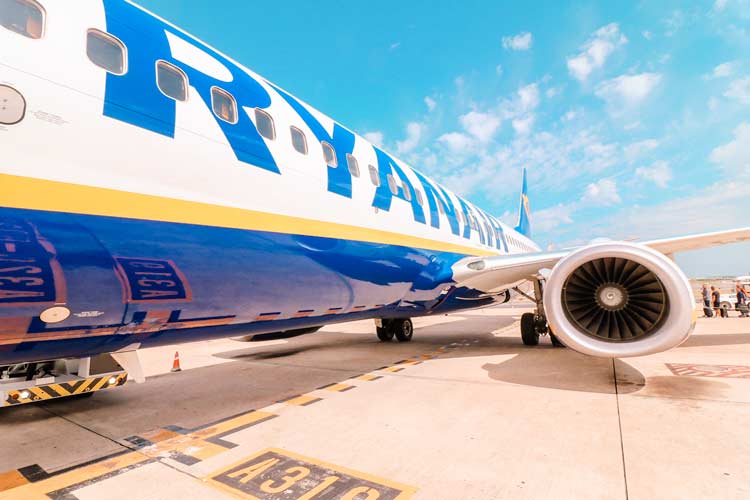
Some of the downsides of budget airlines in Europe include:
- Limited baggage. Easily the biggest demerit to traveling through Europe by budget airlines. Passengers are mostly allowed to board with only a bag that can fit under the seat. Even a carry-on roller will cost extra.
- Not ideal if you have a lot of luggage. Due to the baggage limit, budget airlines may not be the ideal way to get around Europe if you are traveling with a lot of bags. The luggage costs can quickly add up to your total fare.
- Ridiculous fines. Budget airlines are always on your heels, waiting for you to make a mistake. Forgot to check-in online? 50 euro fine. Missed printing out your boarding ticket? It’ll set you back by 30 bucks. You have to read the fine print and be cautious about potential charges.
A few budget airline options for traveling around Europe:
- Ryanair
- Wizz Air
- easyJet
- Vueling
For finding the cheapest flight deals in Europe, I recommend Skyscanner. While there are many other awesome aggregators like Momondo, Kayak, Google Flights, etc., what I love about Skyscanner is a neat feature that allows you to select your destination as ‘everywhere’. It also gives you an option to select the cheapest month to fly.
I have a detailed guide on low cost airlines in Europe. It has everything there is to know about budget flying in the continent. Check it out!
[You Might Like: How to Fly Cheap in Europe]
2. Travel Around Europe by Bus
An excellent way to travel between cities, and across border countries in Europe is to travel by bus.
Especially for short distances, buses provide one of the cheapest ways to get around Europe. For a ride that is 3-4 hours, buses are great.
They are also good for medium distance travel across Europe, say for a 12-14 hour ride. If you’re taking the bus for such distances, a protip is to book overnight tickets. This way, you can spend the larger part of your ride asleep in the coach, and save a night’s worth of accommodation costs.
Buses in Europe are fairly comfortable, most buses have WiFi, they allow for more luggage compared to budget airlines, and they are cheap.
Of course, they can be slower than most other forms of transport, but buses can provide last-mile connectivity in areas where train infrastructure is not at its best. Especially in the Balkan region, buses can help you get around on the cheap.
It’s worth noting that bus ticket fares tend to fluctuate a lot less than those of flights and trains, hence buses can be a more reliable way of getting around Europe if you’re a spontaneous traveler. Should you suddenly decide on an orange October afternoon in Amsterdam to hop across the border and see the fall colors in Bruges, a bus ride’s fare won’t put a dent in your wallet.
While there are a few bus companies operating in Europe, Flixbus has disrupted the transport status quo, if you will. Flixbus buses (say that 5 times fast) operate in most countries and thousands of cities in Europe.
Regiojet, a subsidiary of Student Agency (a travel aggregator), also runs buses in Europe: its own yellow ones and in partnership with national bus service providers.
The coaches are quite cushy and you can often get really good deals. A few months ago I rode a Regiojet bus to Prague for EUR 12.
Megabus is another option specifically for getting around in the UK. They have a few connections in intercontinental Europe as well, however, their zone of genius lies in connecting between cities in the UK. You can sometimes get tickets with Megabus for as low as GBP 1.

3. Get Around in Europe by Train
Trains are undoubtedly one of the fastest ways to travel Europe – in fact, they’re only just behind budget airlines.
Europe has high-speed rails zipping away at upto 300 km/hour. They have plenty of legroom, extremely comfortable seating, and dining cars. What’s not to like?
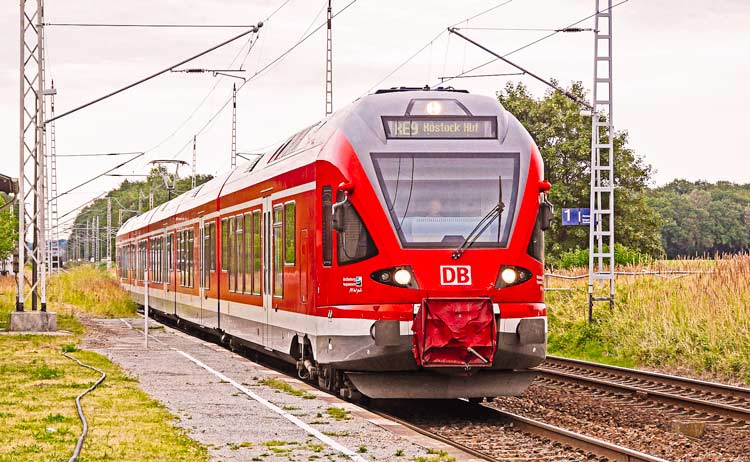
Trains are perfect for covering longer distances as a bus ride might tire you out. They are also pretty great for overnight journeys, where you can save on the accommodation cost and bunk in the train for the night.
The best part, though, about train travel in Europe is the whole romantic air to it. The trains generally ride through the countryside, affording stunning views of the landscape. Something of a poet’s dream.
Train travel is not only one of the best ways to get around in Europe, it is also a very special experience every traveler should put on their bucket list.
One additional benefit (and the cherry on the cake) is that, just like with buses, train stations are mostly located bang in the city center.
Compared to airports which are often located either in the outskirts (take Paris’s Charles de Gaulle for instance), or within the city but way outside the center, trains can save you the cost of transport to and from the airport.
Besides, you can carry an unlimited amount of luggage – which means you’re free to carry back home as much wine as you can fit into your bags! 😉
There are also slower regional trains in Europe, which might cost less but take more time. Nonetheless, they take you through the scenic route and it is truly an idyllic way of exploring Europe.
Rail Passes
All of the above notwithstanding, train travel in Europe is by no means cheap. It is, however, an economical choice considering time and comfort.
If you are planning to visit more than two destinations in Europe, consider getting a train travel pass. There are two kinds of passes availble for travel around Europe:
- Interrail Pass – for EU residents and citizens
- Eurail Pass – for non-EU residents
Both, the interrail and Eurail passes, are priced the same. There are different kinds of passes available under these two broad categories, such as a global pass, one-country pass and premium pass.
The Eurail/Interrail passes aren’t exactly cheap but they offer the best of both worlds – you can travel with some degree of flexibility, and also pack a lot more travel into your budget, compared to booking individual train tickets in Europe.
Here are a few tips to travel around Europe by train:
- Trains generally require you to book seats at an extra cost. This applies even if you are getting a rail pass. Should you visit Europe during low season and the duration of your train ride is short, you can take a chance and travel without booking a seat. If you find a spot to sit, take it. If someone comes along and claims the seat, you’ll have to give it up.
- Also remember that some train journeys might need compulsory seat reservations, so make sure to check while booking your ticket.
- Book train tickets in Europe at least 2-3 months in advance of your travel, as the prices tend to hike up as the travel date draws closer.
- Eurail/Interrail passes enable kids aged 11 years or younger to travel for free. The passes also offer discounts for young adults (27 years or younger) and senior citizens.
- Omio is a useful website to find the most cost and time-effective train travel routes in Europe.
4. Travel Around Europe by Car
Renting a car to get around Europe can sometimes be expensive. In my opinion, though, it is the best way to explore the nooks and corners of your destination.
You can take any route you fancy, get off the highway and onto the inroads, and get a feel of Europe far away from the bustling cities and chock-full town squares.
Driving a car in Europe is like a breath of fresh air.
Thankfully, it is extremely convenient to book a rental car or even hire an RV in Europe. There are also many existing routes that are meant exclusively for road trips. Or if you are an adventurous traveler, even bike rides.
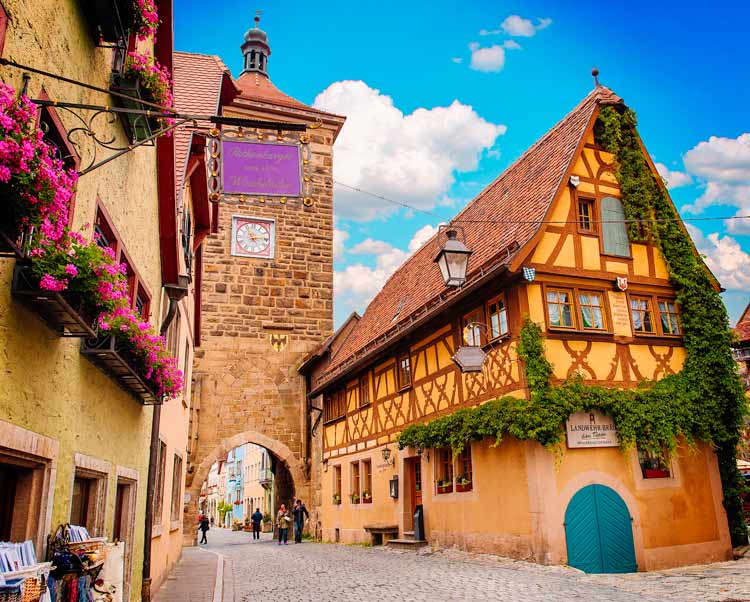
Driving around Europe is particularly economical when traveling in groups or with family. The per head cost can be significantly less than if you would get individual bus/train tickets.
One demerit of renting a car to travel around Europe is that parking can be a pain – especially when you’re in the bigger cities. Generally, parking downtown is expensive. Especially the Old Town areas are mostly car-free zones, and parking there is near impossible.
A hot tip is to park outside of the city center. Also make sure to check out Parkopedia to find paid and free designated parking spots in the city you visit. Helps an awful lot!
How to Travel Around Europe in a Rental Car
Renting a car in Europe is easy and can be booked through companies like Sixt, Europcar, Avis, Hertz and Budget.
Booking.com has a neat car rental service that you can use to make hassle-free bookings at the best prices. Also check out AutoEurope for good car rental deals (something like Momondo but for renting cars).
Below are a few handy things to know before renting a car in Europe:
- While a lot of European countries accept your home country’s license, make sure to check in advance if an international driver’s license is needed.
- Take ‘before’ photos of any scratches or dents you may spot on the rental car, just to be safe.
- Get third party liability insurance. Rental car companies generally offer this at an added cost of EUR 15-25 per day – expensive, I know, but important. If you end up causing any damage to the car, no matter how minor it may be, the extra cost can really hurt your budget. With the liability insurance, you can parry some serious expenses should the situation arise.
- While traveling around Europe by car, you will realize that a lot of countries require you to buy a vignette to access the highways. The vignette is basically a sticker that is to be pasted on your car’s windshield. It can be purchased at fuel stations as you enter the country border.
Rental car companies generally already include the vignette in the total price. Either way, don’t forget to check if the country you’re visiting needs a vignette, ESPECIALLY if you’re taking a rental car across a country border. - If you are going to travel around Europe by car, make sure to read up on traffic rules and signages. The signs are mostly in the local language, so reading up in advance is a smart thing to do.
- This goes without saying, but stick to the speed limit and observe the road laws. There are cameras everywhere and if you’re caught overspeeding or breaking a rule, a fat fine will show up at your door. Besides it’s important to drive responsibly, even more so when we’re in another country.

How to Travel Around Europe in a Campervan
Campervans/RVs have recently become popular, but they’ve been around for quite a while.
While they go by the term RVs in most parts of the world, in Europe these are widely called Campervans or motorhomes.
Renting a campervan in Europe is particularly nice, as you can cover longer distances driving through the countryside, and you can save on costs of accommodation.
However, campervans in Europe can be quite expensive, depending on where you’re visiting. There are designated parking spaces for RVs in most cities in Europe. The tariff for parking can vary from one place to another – it can go beyond EUR 100 per night in places like Denmark and Norway!
All things considered, though, to travel around Europe in a campervan is an adventure in and of itself. You can rent a campervan in Europe online at AutoEurope.
Travel Around Europe with BlaBlaCar
Another cheap and easy way to get around Europe is through the sharing economy.
You know, the sharing model has already manifested itself in all aspects of travel – think transit (Uber), food (Grubhub), accommodation (Airbnb).
Car sharing is a relatively newer kid on the block, but BlaBlaCar has established a solid foothold in the Europe travel industry.
The arrangement is simple: You look up on the app to find people driving towards your destination. You hit them up, and if it all works out, you can ride with them and split the cost.
Booking a ride with BlaBlaCar can also be a great opportunity to meet with a local and learn something new about the city/destination you are visiting. Besides, it’s fairly cheap.
Ride sharing is hugely popular in Europe at the moment, and it can save you considerable money compared to other more conventional means of transport.
Also, the whole system is regulated and monitored by means of an app, which adds a layer of safety. You can look at the ratings and reviews of the person you are looking to share a ride with (pretty much like Uber), to be sure of what you’re getting into.
5. Travel Europe with Tour Packages
Tour packages take the load of planning off your back. They can be one of the easiest ways to get around Europe, especially when you have family and/or older travelers with you.
The itinerary is planned, so you can knock that item off your to-do list, sit back and enjoy the ‘ride’ when the date of departure approaches.
Everything from booking tickets to paying entry fees at attraction sites, from meals to guided tours – it’s all done by the tour company. Besides, a lot of companies have now begun offering a range of itineraries to accomodate all kinds of travelers.
One big upside for a lot of tourists who may not be comfortable plunging into a new country with a vastly different culture and language, that they don’t have to deal with communication barriers of any kind.
Besides, the overall cost of the trip can be much lower with a tour package provider.
For me, a negative of tour packages is that you have to stick to a predetermined plan. The itinerary is set and you have to follow suit. While travel packages generally include most of the “must-do” items in a city, there is little room for you to veer off the intended path and be spontaneous. Of course, all travelers are different and if tour packages seem like your thing, go for it!
If you’d like to have more freedom in planning your Europe trip, but would also want to do the occasional day trip here and there, Viator is a fantastic resource. Everything from hiring a driver to pick-up in a car of your choice, there are all-inclusive packages to reduce the headache of planning every minor detail on your journey. I think it’s totally fair and worth it to book short rides with Viator.
There are also cruise packages that give you a chance to travel around Europe by sea. You can find amazing cruise deals on Kayak.
6. How to Travel Around Europe for Free
One word: Hitchhiking.
The answer sounds simple but clearly isn’t.
Hitchhiking is particularly not my thing. I have a special relationship with Murphy’s Law, and if things can potentially go wrong for me, they often do.

Hitching a ride isn’t a fail-safe way to travel, but it sure gives you a chance to get around in Europe for free. If you’re a smooth talker, you can also find a new acquaintance in a local, and perhaps even get invited to lunch!
I have zero authority to comment on hitchhiking, but I do feel it is a mixed bag. If you’re on a super tight budget, this is an option you can explore.
If you do end up hitching a hike in Europe, keep your eyes and ears on high alert. Look out for any oddities. If something looks like it’s too good to be true, there is damn near a chance that it is.
Common sense is the best arrow in your quiver. Something to always remember no matter how you choose to travel.
What is the Cheapest Way to Travel around Europe?
Tell you what: there is no single best or cheapest way to get around in Europe.
There are a lot of factors that determine how much it costs to travel Europe:
- The quantity of luggage you have
- If you are traveling by yourself or in a group
- If you have older people and/or kids traveling with you
- How much time you are looking to spend in Europe
- At what time of the year you are visiting
Based on the answers to these (and a lot more) questions, the cost of your Europe trip can vary hugely if you choose a single mode of transport.
For example: A solo traveler can hitchhike or share a car ride, and save a load of money in the process. Families, on the contrary, could choose tour packages to travel around Europe on a budget. Groups can find rental cars to be the cheapest way to get around.
If you have planned a longer trip to Europe, you’ll presumably have a lot of luggage so low-cost airlines are ruled out due to their limited baggage allowance.
Every traveler has a unique set of priorities. No single way to travel around Europe is going to tick all the boxes every time.
So, I’d say the best and cheapest way to get around Europe is to mix up all options for various legs of your journey. Spice things up! Dance the dance! Use every tool available in the toolkit.
The incredible thing about traveling in Europe is that there are multiple options, and you can pick and choose for every lap in your overall trip.
So if you can dump your lugguage at a friend’s in Amsterdam, catch a Ryanair flight to Zagreb for under 40 bucks.
If you’re in Rome but aching to sip Chianti in the brilliant vineyards of Florence, rent a car for the weekend.
Should you find a cheap group rail ticket on the Deutsche Bahn, hop onboard and ride to Munich for a beer. TOTALLY worth it.
This sounds like a lot of planning, hence a really useful tool to plan across transport options at the cheapest cost is Rome2Rio. You just have to feed your start and endpoints into the search bar, and Rome2Rio will fetch you the cheapest modes of transport for the entire length of your journey.
How to Travel Within Cities in Europe
In addition to traveling from one country/city in Europe to another, it’s good to know how to get around once you arrive at your destination.
Most European cities are largely walkable. This means that carrying a good pair of shoes and loading up on carbs for a day of sightseeing will be useful. The true charm of Europe lies in exploring a city on foot, and you’d want to maximize the experience.
Cities in Europe, big or small, mostly have a solid transport system of trams, underground and buses. Even if all three aren’t available, at least one of these will be. These forms of transport can provide a viable alternative for long inter-city distances.
You can look up the connections on Google Maps – stating your point of origin and intended destination – and it will give you the fastest connection across various means of transport.
Cabs in Europe aren’t the cheapest option. In fact, getting a local taxi is quite expensive, and the option should be used only if absolutely necessary – or if you’re traveling in a group, in which case it could turn out to be cheaper.
Uber is available in a few places in Europe. Keep in mind that, within a country, Uber may be operating in one city but be absent in another.
There are also a few other ride-sharing services in various places in Europe. For instance, Bolt is popular in Portugal and Malta. Might be worth checking the situation in your destination before you visit.
Tips to Travel Around Europe Cheap
Now that you’re well versed in the different ways to get around Europe, here are some suggestions to optimize your travels and save money as you go gallivanting around the continent:
- Like I said, you will end up walking quite a bit in Europe. The best part about this is that you can hit your 10K steps goal day after day – AND while on vacation!! What’s not to like 😉 . That said, make absolutely sure you carry really comfortable shoes on your Europe trip. Leave the stilettos at home.
- Use aggregator websites like Skyscanner, Momondo, and Kayak to keep a check on the cheapest flights in Europe.
- Plan a circuit for your trip. If you are visiting Berlin, go to Amsterdam rather than Lisbon. Plan your destinations by way of proximity. This simple trick can help you get around Europe cheaply.
- Always. Get. Travel insurance. While it is mandatory to purchase travel insurance when applying for a Schengen visa, you must get insurance even if you are not obliged to. Things have a way of going wrong and travel insurance will save you a LOT of completely unnecessary monetary damage, if they do.
- Travel slow(er). I know traveling around Europe is easier than in other continents, and it is exciting to tick countries off your bucket list. But you can always come back. There will always be more time. If you spend longer in one country and take a while to explore its entire spectrum of culture, dialects, cuisine – your travel in Europe will be much more rewarding. And it will undoubtedly turn out to be cheaper.
The Best Resources to Travel Europe
There are a few tools that can help getting around in Europe easier. While most of these have already been mentioned above, I’m listing out some of my favorite resources below so they are available at a glance.
Skyscanner
Of all the aggregator websites for flight bookings, I love (and use) Skyscanner the most.
It has a noise-free interface, however the best part is that you can choose ‘anywhere’ as the destination and it yields the cheapest flights available to a whole range of places you can visit.
Rome2Rio
On Rome2Rio.com you just have to enter your start and end date of travel, and the algorithm pulls up the cheapest way of getting to your destination through a mix of various transport methods. The website does all the legwork for you.
World Nomads Travel Insurance
My personal recommendation for getting travel insurance ahead of your visit is World Nomads. They not only provide great service, but are also a sustainability-driven company.
Google Maps
If your sense of direction is as hopeless as mine, Google Maps can save your life. Install the app on your phone and don’t forget to download the offline version of the map of your destination (This will be useful in a situation where you don’t have WiFi or connectivity).
Google Translate
Not the best language app, but Google Translate gets the job done.
In case you’re lost and can’t figure out the directions because all the signages are in the local language – a VERY real possibility when you travel around Europe – Google Translate can help you ask someone for help.
As with Maps, keep the offline version of the language downloaded on your Translate app.
Visiting Europe soon? Check out these articles:
- 49 Biggest Landmarks in Europe
- 15 Tips to Travel Europe Cheap
- All You Need to Know about Cheap Flights in Europe





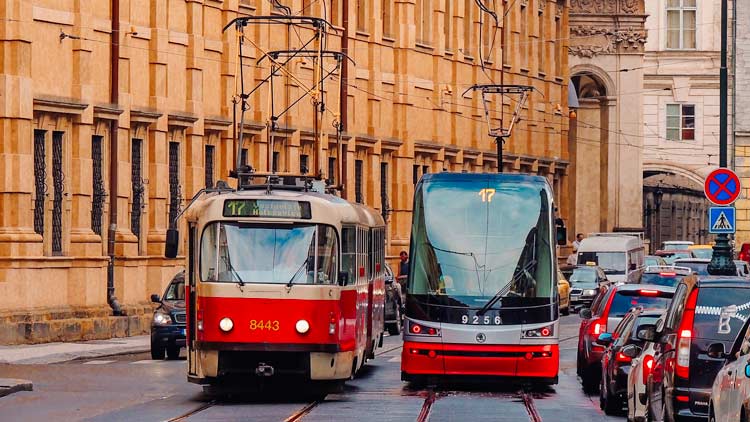
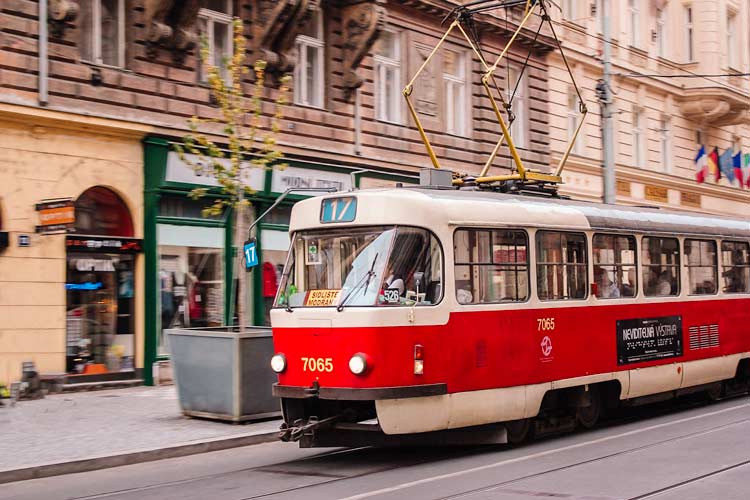






1 Comment. Leave new
Amazing! I know nothing about traveling all over the country, what a wonderful looking place to explore.